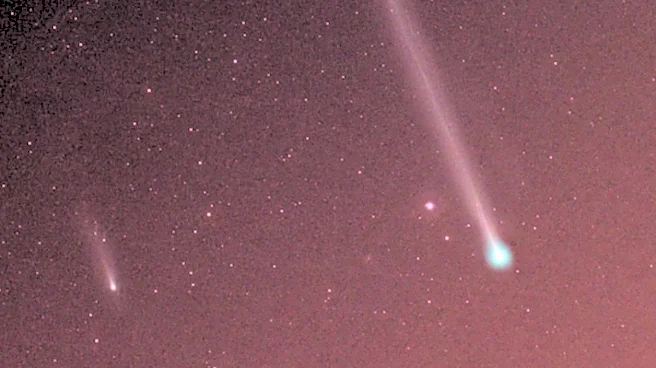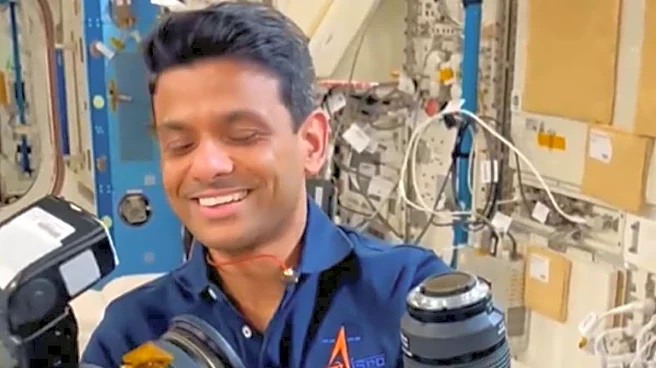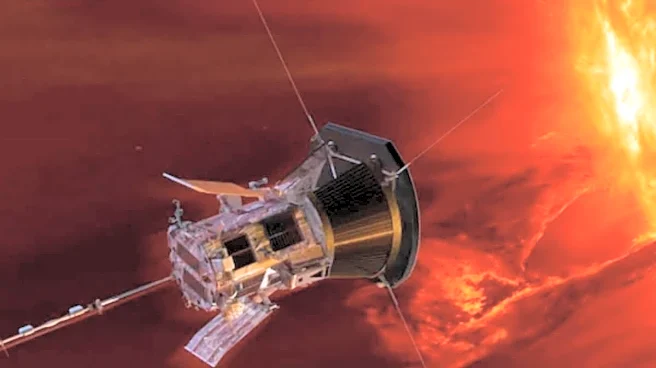Asteroids often pass close to Earth, sparking both scientific curiosity and public concern. But this time, scientists are exploring their options to eliminate one space rock, 2024 YR4. This asteroid has
almost no chance of striking Earth, but scientists warn it has a small yet significant chance of slamming into the Moon in December 2032.
At about 60 meters wide, the asteroid is not a “planet-killer.” Still, a lunar impact could have serious ripple effects for satellites, astronauts, and even Earth itself.
Experts say a collision would send up massive amounts of debris, threatening the International Space Station (ISS) and satellites, while also creating a dazzling meteor shower visible from Earth.
Asteroid 22024 YR4 Is A ‘City Killer’
Asteroid 2024 YR4 was first detected on December 27, 2024, by NASA’s ATLAS survey telescope in Chile, part of a global network that spots near-Earth objects (NEOs). Classified as an Apollo-type NEO, it crosses Earth’s orbit every four years. Upcoming close encounters include a flyby in 2028, followed by the high-stakes 2032 approach.
Infrared scans from NASA’s James Webb Space Telescope (JWST) in 2025 sized the asteroid at 53 to 67 meters tall as a 15–20 story building. This makes it a potential “city-killer,” capable of unleashing several megatons of energy if it ever hits Earth.
Early radar tracking in 2025 briefly suggested a 3% chance of hitting Earth in 2032. That risk has since been ruled out, but the odds of a Moon impact sit around 4%.
In May, an international team led by Dr. Andy Rivkin from the Johns Hopkins Applied Physics Laboratory in Laurel, Maryland, observed the asteroid using JWST’s Near-Infrared Camera.
Asteroid 2024 YR4 is now too distant for both space- and ground-based telescopes. NASA plans to resume observations when the asteroid returns near Earth in 2028.
The chances of the asteroid hitting the moon are very low, and if a lunar impact occurs then then it will not alter the orbit of the moon.
Why A Moon Strike Could Spell Trouble?
While Earth is safe, a direct hit on the Moon would be anything but harmless. JWST data indicate 2024 YR4 is an S-type asteroid, made of silicates and metals. If it hits, it would crash at 20 km per second (45,000 mph)—enough to leave a huge crater with little warning.
With no atmosphere to slow it down, 2024 YR4 could gouge out a 1-km-wide crater—the largest new lunar scar in 5,000 years, as reported by CNN. The impact would fling up to 100 million kilograms of rock and dust into space. Here’s why it matters for us:
Satellite Threats: The debris could increase micrometeoroid strikes in low Earth orbit by up to 1,000 times normal levels, endangering GPS satellites, telecom networks, and telescopes like JWST. The ISS—already pockmarked by space dust—shows what’s at stake.
Risks for human exploration: With NASA’s Artemis program and private ventures like SpaceX planning Moon bases, flying debris could damage landers, habitats, and even spacesuits. Dust clouds could also disrupt solar panels and navigation systems.
A meteor shower on Earth: Some debris would rain down toward Earth, creating a meteor display brighter than the Perseids. Beautiful, yes—but also a reminder of how lunar events can affect us.
Experts stress there’s no need for panic. With a 96% chance of a miss, the danger is low, but not negligible. As the European Space Agency (ESA) has noted, overlooking Moon-bound asteroids could jeopardise the “new space race.”
Scientists’ Plan To Save The Moon
Defence plans for a possible Moon impact remain unclear and will depend on future risk assessments by planetary defence teams when the asteroid returns to view in 2028.
Traditionally, asteroid defence favours gentle nudges over explosions. But 2024 YR4’s short timeline and uncertainties make scientists consider bolder options. The goal isn’t just to destroy it but to ensure no large chunk reaches the Moon.
A September 2025 preprint by NASA engineer Brent Barbee and colleagues outlines strategies based on the successful DART (Double Asteroid Redirection Test) mission of 2022.
Step 1: Recon First
Before any action, scientists need data on the asteroid’s mass, spin, and structure. Proposals include:
Redirecting probes like OSIRIS-APEX or Psyche for a 2028 flyby.
Launching a dedicated scout by 2029–2030.
Using JWST for refined orbital tracking in 2026.
Step 2: The “Blow-Up” Options
Kinetic Disruption: A high-speed impactor, launched by rockets like Falcon Heavy or SLS, could break the asteroid into smaller fragments that burn up harmlessly.
Nuclear Option: A controlled nuclear detonation near the asteroid could push it off course. While never tested in space, simulations suggest it could work with minimal fallout risks.
Both methods would be designed with fail-safes to ensure fragments don’t veer toward Earth. The price tag: billions—but far less than cleaning up after an impact.
A Stress Test for Planetary Defence
Scientists have until 2028 for reconnaissance and until 2032 for possible disruption. Beyond technology, challenges include funding, international coordination, and debates over using nuclear devices in space.
Still, 2024 YR4 is seen as a “goldilocks case”—serious enough to prepare for, but not an immediate doomsday. Future missions like ESA’s NEOMIR telescope and the Hera mission will improve tracking and defence strategies.
As Barbee’s team notes, this asteroid is a stress test for rapid planetary defence. By preparing now, humanity strengthens its cosmic toolkit and safeguards future space exploration.
In short, “blowing up” 2024 YR4 isn’t fearmongering—it is foresight. Protecting the Moon also means protecting Earth’s orbital neighbourhood as we expand into cislunar space.




/images/ppid_a911dc6a-image-175885874095067790.webp)




/images/ppid_a911dc6a-image-175871505277539192.webp)
/images/ppid_59c68470-image-175870503456511327.webp)


